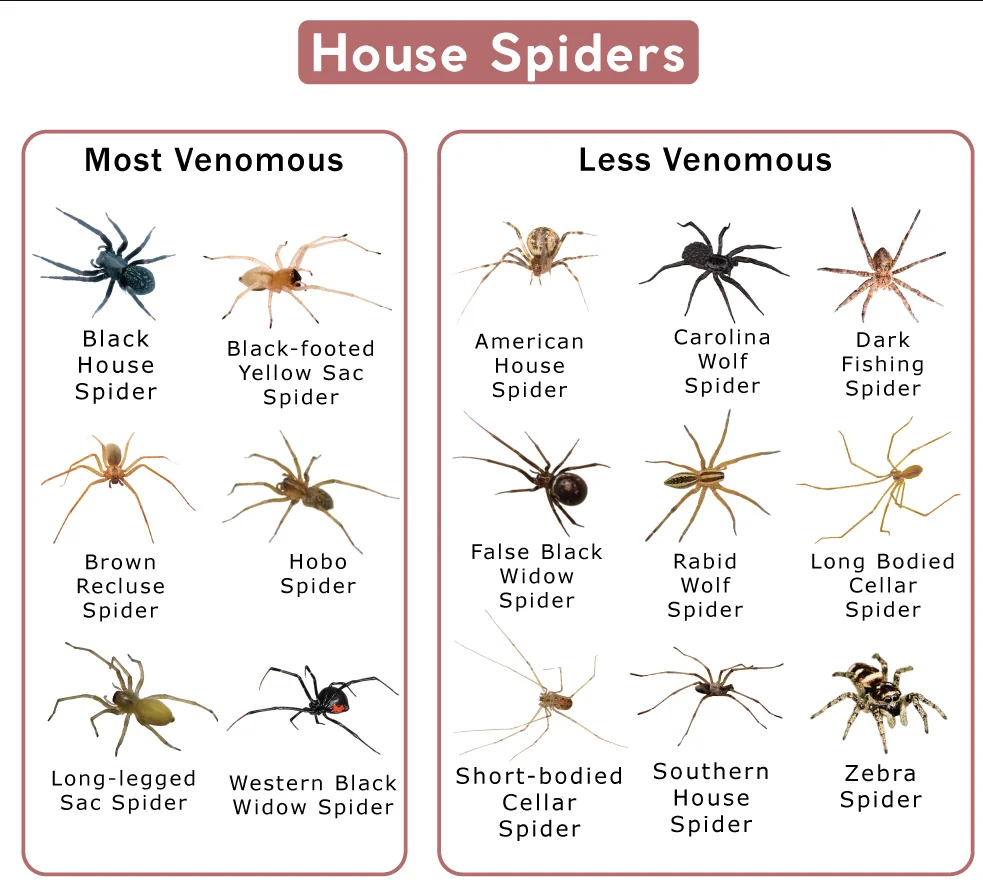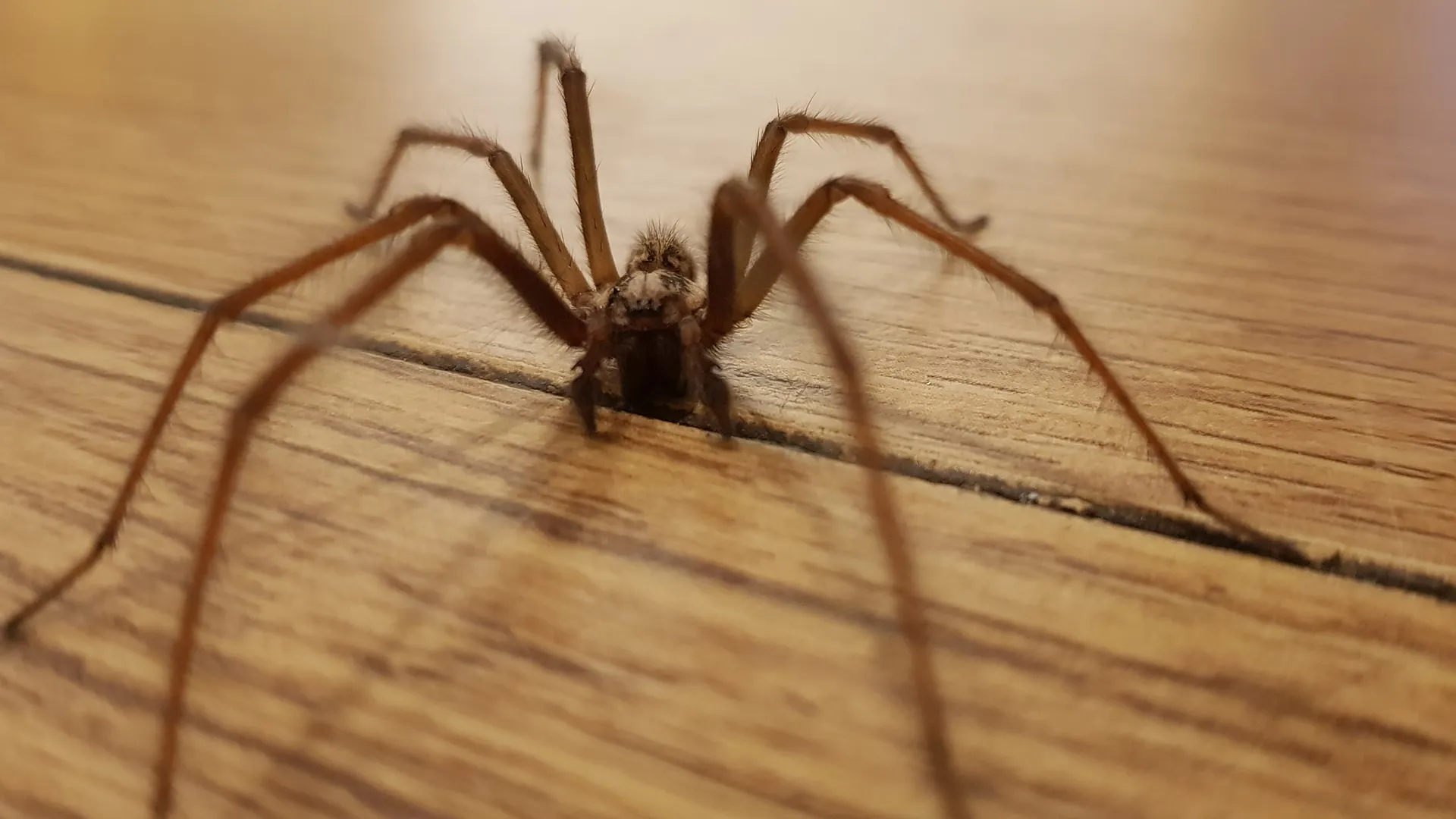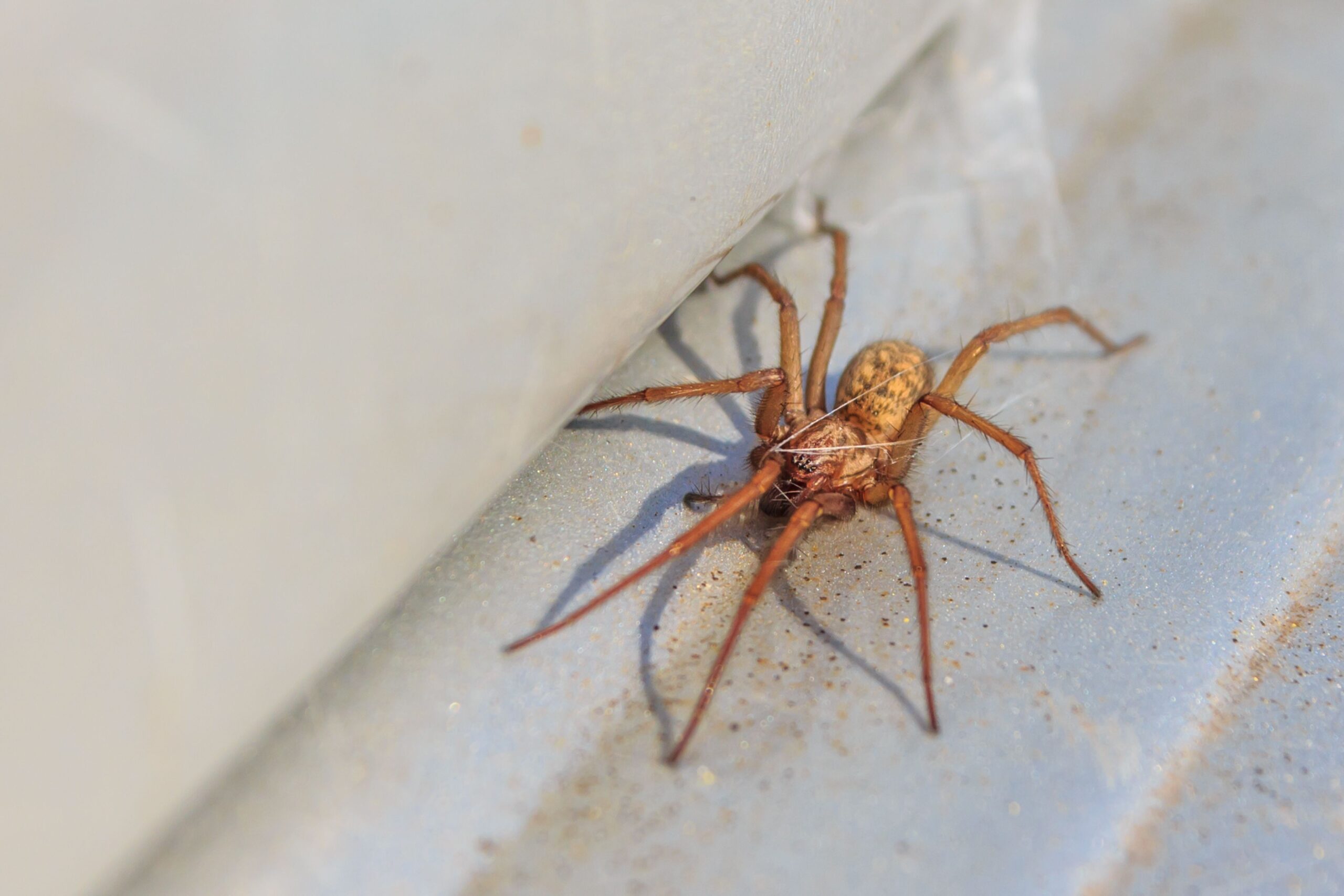Florida’s subtropical environment featuring warm weather, mild winters, and steady humidity gives spiders the chance to remain active and spin webs all year long. In Panama City, situated in Florida’s Panhandle, these eight-legged insects frequently enter homes, rentals, or commercial properties if occupant or manager oversight declines. This page reveals why spiders thrive in Florida, how to spot an infestation, and why a professional spider exterminator is essential for ensuring a web-free, comfortable interior.
Whether you maintain a residence in Panama City or oversee rental units serving Panama City Beach and Lynn Haven, noticing spider activity swiftly and using specialized, multi-step treatments helps avoid occupant worry, potential spider bites, and the frustration of repeated do-it-yourself solutions that often skip hidden egg sacs or ignore underlying insect issues drawing spiders indoors.
Why Spiders Flourish in Florida
Mild Winter Temperatures
In colder regions, freezing weather drastically reduces spider populations for months. Florida’s gentle cold season rarely submerges near freezing, so spiders remain active and continue breeding. Indoors, climate control (around 65–85°F) prevents seasonal slowdowns, allowing spiders to feed on insect prey year-round if occupant or property manager vigilance declines.
Elevated Humidity & Insect Prey
Spiders feed primarily on insects roaches, flies, or other pests. Florida’s humidity fosters abundant bugs, while frequent yard irrigation or rainfall draws them close to structures. Porch or patio lights lure nighttime insects, encouraging spiders to spin webs around corners or eaves. Inside, occupant or staff housekeeping gaps can sustain insects if not promptly addressed.
Movement of People & Goods
Florida’s relocations, tourism, and occupant turnover often shuffle personal belongings, secondhand items, or décor that may harbor spider egg sacs. In multi-unit structures or short-term rentals, occupant or manager oversight can allow spiders to spread if occupant checks or insect control remain partial.
Multiple Spider Species
Florida hosts numerous spider types, each with unique habits:
- House Spiders: Weave messy webs indoors, often behind furniture or near corners.
- Orb Weavers: Create large, circular webs outside porches, gardens.
- Widow Spiders: Possibly venomous if threatened; favor dark garages or cluttered sheds.
- Wolf Spiders: Hunt on foot rather than weaving typical webs, sometimes roaming indoors in pursuit of insect prey.
All can establish themselves unless occupant diligence or exterminator intervention shrinks insect prey and removes spider egg sacs, especially in Florida’s mild winter supporting year-round feeding.

Telltale Signs of a Spider Infestation
- Multiple Indoor Webs
- A few single webs is normal, but numerous webs near corners, ceilings, or baseboards often point to a rising spider population.
- Orb weavers typically create outdoor webs, whereas house or cobweb spiders spin messy, tangled webs indoors.
- A few single webs is normal, but numerous webs near corners, ceilings, or baseboards often point to a rising spider population.
- Egg Sacs
- Small, rounded or disc-like sacs attached to webs, furniture undersides, or undisturbed areas.
- Each sac can yield numerous spiderlings if occupant synergy or professional solutions don’t remove them.
- Small, rounded or disc-like sacs attached to webs, furniture undersides, or undisturbed areas.
- Frequent Spider Sightings
- Seeing multiple spiders scuttling indoors indicates stable insect prey fueling spider expansions.
- Wolf spiders may traverse floors or walls at night; widow spiders hide in cluttered, dark nooks.
- Seeing multiple spiders scuttling indoors indicates stable insect prey fueling spider expansions.
- Insect Husks in Webs
- Bits of moths, flies, or roaches stuck in silken threads confirm active spider feeding.
- Significant insect leftovers typically suggest well-fed spiders that can produce more egg sacs if occupant checks are lacking.
- Bits of moths, flies, or roaches stuck in silken threads confirm active spider feeding.
- Possible Spider Bites
- Although Florida spiders rarely bite humans, occupant anxiety increases if venomous widow spiders appear indoors.
- Bites aren’t common but can occur with heavier spider activity.
- Although Florida spiders rarely bite humans, occupant anxiety increases if venomous widow spiders appear indoors.
- Seldom-Used or Damp Storage
- Garages, sheds, or attic corners accumulate webs and egg sacs if occupant cleaning is intermittent.
- Spiders anchor new egg sacs and remain well-fed on insects living in clutter.
- Garages, sheds, or attic corners accumulate webs and egg sacs if occupant cleaning is intermittent.
Why Overlooking Spiders Is Risky
Population Expansion
Female spiders deposit multiple egg sacs, each containing dozens (or more) of spiderlings. Ignoring these sacs allows spiderlings to hatch, distributing webs across more corners if occupant or pro removal is neglected.
Occupant Stress & Bites
Though bites are uncommon, occupant fear escalates upon seeing large orb weavers or black widow spiders indoors. Even harmless household spiders can spark occupant frustration if webs clutter ceilings or corners.
Unsightly Web Accumulation
Excess webs in corners, around ceilings, or behind furniture mar property aesthetics, suggesting poor housekeeping to visitors or occupants. For lodging or rentals, occupant dissatisfaction may arise if webs remain scattered in visible areas.
Underlying Insect Infestation
Spiders prosper where insect prey is ample. Without occupant or professional insect control, spider webs reappear swiftly even after occupant attempts to remove them. Sealing trash bins or controlling roaches indirectly limits spider expansions.
Larger-Scale Treatments Later
When egg sacs hatch across multiple rooms, newly emerged spiderlings saturate property corners. Eradicating advanced infestations can demand occupant displacement or repeated dusting, increasing occupant disruption and cost.
Why a Professional Spider Exterminator Matters
Full-Scale Inspections
A spider exterminator carefully checks corners, furniture backs, overhead beams, or attics for webs, egg sacs, and bug carcasses. Determining spider species house, orb weaver, widow, or wolf guides whether overhead eave dusting, web vacuuming, or insecticidal sprays or dust suit occupant synergy best.
Multi-Method Removal
Professionals remove webs, vacuum egg sacs, and use insecticidal products where spiders nest or rest. DIY occupant solutions like random aerosols often kill a few visible spiders but leave intact sacs or ignore insect problems fueling spider presence indoors.
Safe, Targeted Chemicals
Random occupant pesticide usage can endanger occupant or pet health by coating living areas. Exterminators apply insecticidal dust or sprays precisely in cracks, corners, or overhead beams prime spider hideouts while occupant synergy (removing webs) ensures egg sac disposal. Reducing occupant or pet exposure remains a priority.
Underlying Insect Control
Because spiders feed on insects, occupant synergy addressing roach or fly issues indirectly starves them. Sealing garbage bins, opting for bug lights outdoors, or tackling roach populations hamper spider hunts, denying them the insect prey they need.
Re-Check & Follow-Up
Spider egg sacs can hatch weeks post occupant or manager removal. Many exterminators remain on-call or re-check occupant sightings if new webs appear, performing additional occupant housekeeping or insecticidal dusting so newly hatched spiderlings also encounter lethal exposure.

Typical Methods for Spider Treatments
- Inspection & Species Recognition
- Professionals look for webs, egg sacs, or leftover insects in corners, attics, behind furniture, or overhead beams.
- Identifying spider type clarifies if overhead eave spraying, web vacuuming, or indoor dusting is best.
- Professionals look for webs, egg sacs, or leftover insects in corners, attics, behind furniture, or overhead beams.
- Web & Egg Sac Removal
- Physically removing webs and egg sacs cuts spider food sources.
- Properly discarding (sealed in plastic) prevents egg sac hatching in occupant trash bins.
- Physically removing webs and egg sacs cuts spider food sources.
- Insecticidal Dust & Sprays
- Professionals place residual sprays or dust near baseboards, corners, or overhead beams—spider hangouts.
- Occupant or pet exposure remains minimized, ensuring spiders or new spiderlings face lethal conditions.
- Professionals place residual sprays or dust near baseboards, corners, or overhead beams—spider hangouts.
- Reducing Insect Prey
- Spiders rely on insects like roaches or flies. Occupant synergy controlling these pests drastically reduces spider expansions.
- Insect Growth Regulators hamper insect breeding, indirectly depriving spiders of ample prey.
- Spiders rely on insects like roaches or flies. Occupant synergy controlling these pests drastically reduces spider expansions.
- Vacuuming & Steam Indoors
- Regular vacuuming picks up stray spiders, egg sacs, or leftover insect remains.
- Steam kills spiders or eggs on direct contact in fabric folds, chemical-free.
- Regular vacuuming picks up stray spiders, egg sacs, or leftover insect remains.
- Exclusion & Outdoor Adjustments
- Sealing cracks, patching torn screens, or installing door sweeps blocks insect infiltration.
- Replacing bright porch bulbs with yellow “bug lights” cuts nighttime insect draw, restricting spider hunts near entrances.
- Sealing cracks, patching torn screens, or installing door sweeps blocks insect infiltration.
- Re-Check & Monitoring
- Fresh hatchlings may appear weeks after occupant removal of webs.
- Additional occupant synergy or insecticidal dust ensures leftover egg sacs or newly hatched spiders don’t reestablish webs.
- Fresh hatchlings may appear weeks after occupant removal of webs.
Service Area: Panama City, Panama City Beach, Lynn Haven
While spiders adapt widely to Florida’s mild winters, this page specifically covers Panama City plus adjacent Panama City Beach and Lynn Haven, where occupant synergy and specialized spider treatments are vital for thoroughly removing or halting spider populations. Because Florida’s gentle cold season rarely discourages spider feeding or breeding, occupant synergy plus professional extermination remain the best combination for a web-free property.

Why Choose Us
Florida-Based Expertise
We blend recognized spider management vacuuming webs, insecticidal dust or sprays, limiting insects geared to Florida’s environment and occupant routines. Occupant synergy like removing clutter or sealing cracks plus thorough exterminator coverage surpass occupant attempts reliant on random aerosols skipping egg sacs or ignoring insect prey fueling spider expansions.
Detailed Inspections
Before chemical usage, technicians thoroughly check corners, overhead beams, or furniture backs for webs, egg sacs, or leftover insect husks. Determining whether it’s only one room or multiple spaces shapes occupant synergy plus exterminator coverage for each spider stage.
Safe, Targeted Applications
Professionals apply insecticidal dust or sprays exactly where spiders dwell cracks, baseboards, overhead beams rather than oversaturating occupant living zones. Physical removal of webs or sacs swiftly lowers spider numbers. Occupant synergy controlling insect populations cements fewer reasons for spiders to remain indoors.
Re-Check & Occupant Guidance
Spider egg sacs hatch weeks after occupant removal, so occupant or professional re-check ensures newly emerged spiderlings also meet lethal solutions. Occupants might adopt frequent vacuuming, swap bright porch bulbs for “bug lights,” or keep window screens intact starving spiders by limiting insect prey near entrances.
Quick, Local Service
Covering Panama City plus Panama City Beach and Lynn Haven we understand occupant patterns, short-term rentals, and Florida’s mild winter fueling year-round spider hunts. Our proven techniques plus flexible scheduling reduce occupant disruptions, guaranteeing spiders vanish from each life stage fully.
Next Steps
Seeing webs in ceiling corners, noticing egg sacs along baseboards, or anxious about venomous species hiding in clutter? Contact us to learn more or schedule your service. Our spider treatments in Panama City (serving also Panama City Beach and Lynn Haven) combine property-wide checks, web/egg sac removal, carefully placed insecticidal solutions, occupant synergy limiting insects, plus re-check visits stamping out established spiders and deterring fresh invasions.
Act fast to spare occupants or pets from potential bites, occupant anxiety, or unsightly webs. Rely on our Florida-tailored spider exterminator expertise to manage each spider species effectively, ensuring your interior remains web-free despite Florida’s mild winter that otherwise fosters insect prey and thus spider populations year-round.
